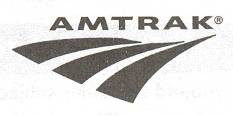
Terminal Station
What do: The Chicago World’s Fair, the New York City Public Library, the Palace of Fine Arts in San Francisco CA, The Vanderbilt House in Newport (RI), and the Terminal Station in Chattanooga TN have in common? The answer, as I am sure many have guessed, is they are all premier examples of the Beaux-Arts style of Architecture.
The Beau Arts Style of Architecture was a popular style in America from about 1885 to 1920. The name comes from a particular school of architecture, the Ecole des Beaux-Arts in Paris France (Beaux-Arts is the French word we translate as “Fine Arts” in English).
The Beaux-Arts style was marked by a preference for using designs and ornamentation from earlier periods of architecture, primarily from Ro
 man and Renaissance buildings. In addition to the columns arches etc. that one would expect from a design with this parentage, it also included designs worked into the exterior walls. These designs were made of the same material as the rest of the wall and thus made to seem as if they were a regular, essential part of the structure and not just a bric-a-brac ornamentation (though, in fact, that is exactly what they were/are).
man and Renaissance buildings. In addition to the columns arches etc. that one would expect from a design with this parentage, it also included designs worked into the exterior walls. These designs were made of the same material as the rest of the wall and thus made to seem as if they were a regular, essential part of the structure and not just a bric-a-brac ornamentation (though, in fact, that is exactly what they were/are).Of all the buildings listed above, one stands out as being able to claim that it was a “prize-winning” example of Beaux-Arts Architecture. In 1900 Donald Barber was a student at the Ecole des Beaux-Arts in Paris. He submitted a design for a building in a contest the school sponorsed, and won. Several years later, now a graduate, he was approached by the President of the Southern Railway about designing a Terminal building for the railroad to use in Chattanooga Tennessee. According to the records, the design he presented, and executed, was the design he had won the prize with in Paris.
 The Chattanooga Terminal was opened in 1909 and was used by the Southern Railway until 1970. In 1973 it was re-developed as a hotel and opened as a Hilton. In 1989, as a prelude to a major renovation, the Hilton was closed. After it was restored, it was re-opened, this time as a Holiday Inn.
The Chattanooga Terminal was opened in 1909 and was used by the Southern Railway until 1970. In 1973 it was re-developed as a hotel and opened as a Hilton. In 1989, as a prelude to a major renovation, the Hilton was closed. After it was restored, it was re-opened, this time as a Holiday Inn.We stayed there in 2006. The interior of the Terminal is now a combination Front Desk, Lobby, Bar and Restaurant. The actual hotel section with
 rooms is in back of the terminal building. However, there are also some old style “Pullman cars” parked on non-functioning tracks beween the two structures which can be rented for a night’s stay. Also out back, in addition to static displays of various pieces of equipment, there is one functioning piece, a restored New Orleans Street car. When we were there, it was possible to take a brief ride on this specimen on a short circuit around the hotel’s property.
rooms is in back of the terminal building. However, there are also some old style “Pullman cars” parked on non-functioning tracks beween the two structures which can be rented for a night’s stay. Also out back, in addition to static displays of various pieces of equipment, there is one functioning piece, a restored New Orleans Street car. When we were there, it was possible to take a brief ride on this specimen on a short circuit around the hotel’s property.If you ever go to Chattanooga Tennessee, and there is a lot to see and do there, I strongly recommend you consider staying at this land-mark, design award-winning structure. And by all means, ride the Trolley if you can.





